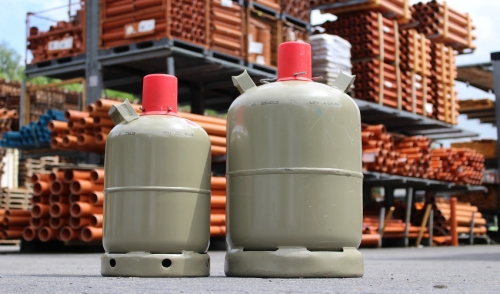{article.name}
Stay Informed
Propane Tank Safety

- Share this:
- Share on Facebook
- Pin on Pinterest
- Tweet on Twitter
Propane tank safety and storage has always been an issue for propane consumers in the residential and industrial LP Gas cylinder markets. It’s just as important to know what to do when handling a propane tank as knowing what not to do. This even includes knowing the location as well as the position of the cylinder itself is all a part of essential safety practices.
When handled correctly, propane gas is a safe, clean-burning energy source. In addition, propane tanks provide many safety benefits in comparison to other forms of flammable fuel. Propane tanks are 20 times more puncture resistant than those tanks that are filled with ethanol, methanol, or gasoline. These tanks are constructed from carbon steel and equipped with a device that has the ability to cut off the filling process when it's at 80 percent capacity called a overfill prevention device (OPD). Additionally propane has the lowest flammability rating of any other alternative fuel, internal vaporization cannot be ingested, and will not contaminate water or soil in the event of a leak.
For proper tank safety, take some time to evaluate the status of your tank. The first rule of propane tank safety is to inspect your tank. Check the date on your tank to make sure it’s not expired or rusted. All propane tanks must be certified before they can be refilled. Any tank that is uncertified, expired, has a missing foot ring, and has excessive rust or has been painted over is in violation of national propane gas rules and policies. These tanks also have the potential to cause serious harm. Moreover, if tanks are older than 12 years (10 years in Canada) they must go through inspection to be re-qualified before they can be refilled. Never inspect, use, or store a propane tank indoor as this can lead to severe damage to you and your home. Try to familiarize yourself with the smell of propane so that you may spot or smell a leak when they occur. The unintentional discharge of propane gas can create a flammable, explosive environment. If you are ever unsure of a leak, take cloth soaked with soapy water and wipe the sides of the tank. If a bubble forms then you will know a leak is present and you should turn off the valve and check the system immediately. Then you may proceed to repair or replace any defective parts of the tank.
Another big safety rule is to never handle a propane tank while smoking or overfill it at a dispensing station. Never use a tank that does not have a overfill prevention device (OPD) to protect you against overfilling. Finally, always store your propane cylinder in an upright position on a flat surface away from other flammable objects and any source of ignition. Keep the cylinder away from part of the environment that can cause it to rust or puncture the tank. Propane is an awesome source of fuel. If you really think about it, what type of barbeque would you have without it? Therefore, as a final rule of thumb, always handle propane-powered equipment with caution and follow the manufacturer's instructions.
Special Offers
We are constantly adding new specials to our site. Be sure to check back often!


Comments